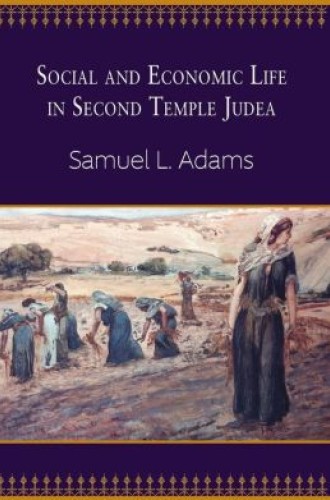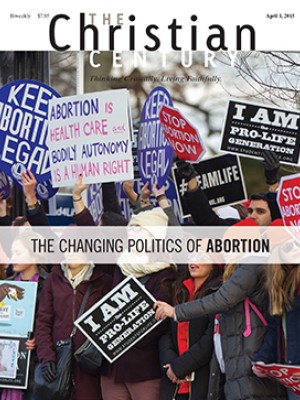Social and Economic Life in Second Temple Judea, by Samuel L. Adams
Samuel Adams of Union Seminary in Richmond has written a book that is important on two counts. First, he focuses on the historical period of the Second Temple, which stretches from the end of the Babylonian exile in 532 BCE to the destruction of the temple by the Romans in 70 CE. This period features the formation and emergence of Judaism and the beginnings of the Christian movement. Until recently, little was known about the period, and critical scholars paid little attention to it because they had a generally credulous confidence in the early preexilic materials with their buoyant theological affirmations. This shift in scholarship is well reflected by Adams, though many readers may be playing catch-up with the newer focus.
The second reason the book is important is that Adams persistently asks economic questions rather than focusing on theological-spiritual matters to the neglect of material considerations—or imagining that texts can be understood apart from context. Adams’s method is to follow the money. As he shows, neglecting economic matters probably means misunderstanding the text.
Read our latest issue or browse back issues.
The subject that Adams pursues is not an easy one, because unlike theological statements in the text, economic matters are mostly hidden and must be pieced together by inference. A delight of the book is to watch Adams patiently connect the dots in fresh, suggestive, and credible ways.
In five substance-packed chapters Adams takes up issues of family life and marriage, work and financial exchange, the status of women and children, the role of the state, and the ethics of wealth and poverty. Concerning each topic he shows how deeply vested economic interests crowd in on social relationships and assumptions, provoking dispute and conflict.
The most important specific insight is in his chapter on family life and marriage. He gives attention to Ezra’s harsh measure of expelling from Israel “foreign wives” acquired during deportation. Commentators usually say that Ezra reflects a xenophobic propensity—a judgment that has fueled many Christian caricatures of Jews as a restrictive community. What Adams makes clear is that the breakup of those marriages was to protect the financial interests of elite Jews, lest marriage cause the transfer of wealth outside their privileged community.
The outcome of Ezra’s action remains harsh, but in this light it takes on a different kind of credibility. The act of expulsion is more understandable when we remember that ancient society made no distinction between religious and secular concerns, so the act of expulsion was presented as one of religious fidelity. Any reader can factor in the way moneyed families often worry about the loss of surplus wealth through “bad” marriages.
In his study of the status of women and children, Adams of course finds an androcentric order. He focuses, however, on indications of social stratification within the community. As a result, he is able to show that women and children of privilege had many more social opportunities than the great majority of the population, who labored in a hand-to-mouth existence. The conflict of class in Adams’s study is of immense importance, for we now read in an acutely stratified society. Perhaps then as now, if someone called attention to stratification, those in the top stratum immediately accused them of inciting class warfare.
Two points of social analysis surface continually in Adams’s perspective. On the one hand is the class distinction between the haves and the have-nots, or between urban elites and subsistence peasants. The narrative of Ruth becomes a study of class distinctions and the way in which a privileged and powerful man like Boaz could choose to protect a vulnerable woman. The defining text, however, is Nehemiah 5, in which Nehemiah appeals to the Torah in his reprimand of elites who are taxing the majority into poverty. The agrarian life of the peasants was tenuous, always overshadowed by the prospect of land being seized by those who had resources and social power. That social arrangement permitted high-interest loans, a predecessor to payday loans.
Adams allows that an emphasis on YHWH as a “lover of justice” greatly resisted such exploitation, and, following Jacob Milgrom, he judges that the Jubilee was “a total reversal of the antichretic loan arrangements.” He is, however, very cautious about the historical reality of a Jubilee practice, noting that there is “no concrete evidence” that the Jubilee law became a reality, and judging it to be “more utopian than actual practice.”
On the other hand, the recurring social reality of Jewish life was imperial control by a succession of great powers whose goal, predictably, was to extract revenue by means of taxation. The effectiveness of such taxation depended on cooperation between the foreign power and local authorities who had a privileged status as a result of such collusion. Specifically, the temple became a locale of political and economic power, and the temple priests enjoyed great advantage when they colluded with occupying powers.
Adams’s final chapter concerns the ethics of wealth and poverty, with attention to the wisdom traditions. He finds great ambiguity in the book of Proverbs concerning both the dangers of excessive reliance on wealth and the assurance of financial gains for those who obey Torah. Job and Ecclesiastes, on the other hand, offer mostly skepticism about economic matters. Adams does not venture far into the New Testament, but he notes how the Lucan author focuses on economics, promising heavenly rewards for struggling persons and eternal punishment for the wealthy.
This is a critical historical study. Nonetheless the book teems with contemporaneity. In its final pages Adams acknowledges that our complex economy is remote from that ancient small agrarian economy but says that “even with these contextual differences, there are more similarities than might appear at first.” He mentions various lending arrangements, including payday lending, and the demand for child labor. He concludes with two statements indicating that he has all along had one eye on his own interpretive context:
One consistent assertion in this regard is that God stands on the side of the most vulnerable members of society, even becoming their advocate. . . . We cannot fully understand the God they worshiped or the nature of their faith without also considering the economics of their time.
The book is a clear attestation that one does not need to appeal to Marxian categories to get at the question of economic justice in the Bible. Adams shows us what is in the text. In the face of our recurring predilection to misread the text in order not to “upset the faithful,” Adams provides a textual basis for more honesty and perhaps more courage.






